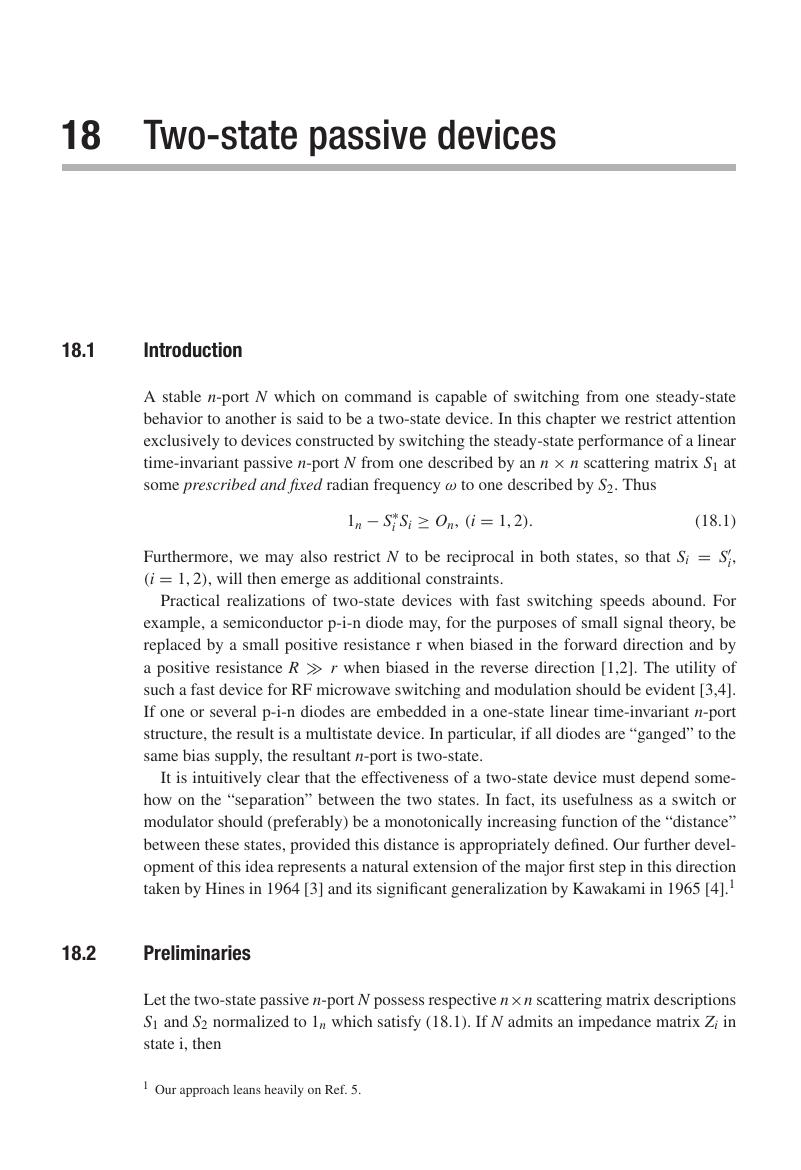Book contents
- Frontmatter
- Contents
- Preface
- 1 Auxiliary results
- 2 Transforms and passivity
- 3 Some classical passive 1-port synthesis
- 4 Tellegen's Theorem and 2-element 1-ports
- 5 Elements of filters and reactance-ladders
- 6 Passive n-ports
- 7 Procedures of passive n-port synthesis
- 8 Basic design of reactance 2-ports
- 9 Cascade synthesis of passive 1-ports
- 10 A theory of broadband matching
- 11 Stability and complex normalization
- 12 Design of passive multiplexers
- 13 Selected topics
- 14 Multiconductor TEM transmission lines
- 15 The ideal TEM 2-port
- 16 Single frequency n-port geometry
- 17 Immittances of n-terminal networks
- 18 Two-state passive devices
- Index
- References
18 - Two-state passive devices
Published online by Cambridge University Press: 05 November 2015
- Frontmatter
- Contents
- Preface
- 1 Auxiliary results
- 2 Transforms and passivity
- 3 Some classical passive 1-port synthesis
- 4 Tellegen's Theorem and 2-element 1-ports
- 5 Elements of filters and reactance-ladders
- 6 Passive n-ports
- 7 Procedures of passive n-port synthesis
- 8 Basic design of reactance 2-ports
- 9 Cascade synthesis of passive 1-ports
- 10 A theory of broadband matching
- 11 Stability and complex normalization
- 12 Design of passive multiplexers
- 13 Selected topics
- 14 Multiconductor TEM transmission lines
- 15 The ideal TEM 2-port
- 16 Single frequency n-port geometry
- 17 Immittances of n-terminal networks
- 18 Two-state passive devices
- Index
- References
Summary

- Type
- Chapter
- Information
- Theory and Synthesis of Linear Passive Time-Invariant Networks , pp. 620 - 638Publisher: Cambridge University PressPrint publication year: 2015



